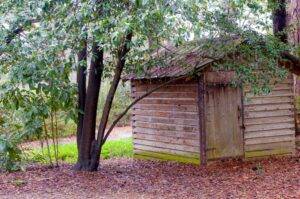
The journey to acquire a new shed transforms not just your garden but your lifestyle, offering a blend of utility and aesthetic pleasure.
Whether you’re envisioning a snug workshop, a serene hideaway, or simply a practical storage solution, the adventure begins with sifting through a myriad of choices, materials, and designs to find your perfect fit. This guide aims to simplify that journey, covering everything from selecting the ideal shed to disposing of the old one, and every step of building your new garden gem.
Discovering Your Options
The search for the perfect shed is akin to embarking on a treasure hunt, with countless possibilities awaiting. Your quest starts with the choice of material—wood, plastic, metal, or perhaps a hybrid. Each material offers its unique blend of beauty, durability, and maintenance.
Wooden sheds offer timeless allure, effortlessly merging with your garden’s natural aesthetic. They beckon with the promise of customisation, ready to don a coat of paint or stain to match your taste. Yet, this beauty demands commitment, requiring regular upkeep to maintain its charm.
Plastic sheds present a hassle-free alternative, boasting resilience and ease of care. Their immunity to rot and pests makes them a pragmatic choice, though some may find they lack the warmth of traditional wood.
Metal sheds stand as the guardians of your garden, prized for their strength and longevity. While they offer unparalleled protection, their metallic essence may not harmonise with every garden theme, and vigilance against rust is a must.
Selecting the Perfect Shed
The first step in your shed selection process is to clarify its purpose. Will it safeguard your tools, nurture your green thumb, or become your secluded workspace? This clarity will guide your choice in size, style, and features. Selecting the perfect shed for your garden involves considering several factors to ensure it meets your needs, fits well within your space, and complements your garden’s aesthetic. Here are some tips to guide you through the process:
Purpose and Use: Determine what you will use the shed for. Is it for storage, as a workspace, or maybe a combination of both? Your intended use will influence the size, design, and features you need.
Size and Location: Consider the size of your garden and where you plan to place the shed. Ensure there’s enough clearance around the shed for doors to open freely and for easy access to all sides for maintenance. Remember, a larger shed provides more storage but will take up more space, so find a balance that works for your garden.
Material: Sheds come in various materials such as wood, metal, and plastic, each with its pros and cons. Wooden sheds offer a traditional look and can be easily customised but require maintenance to prevent decay. Metal sheds are durable and low maintenance but can be prone to rust in certain climates. Plastic sheds are lightweight, maintenance-free, and resistant to rot and rust, but may not blend as well with garden aesthetics as wood.
Design and Aesthetics: Choose a shed design that complements your home and garden. Consider the shed’s colour, roof style, and whether you want windows for natural light. Some people prefer a shed that blends into the garden, while others might choose a shed that stands out as a feature.
Foundation and Flooring: Ensure the shed has a solid and level foundation to prevent structural issues. Options include concrete slabs, paving slabs, or wooden foundations. Some sheds come with a floor, while others do not, so you may need to plan for this as part of your foundation.
Budget: Set a budget considering not only the cost of the shed but also the foundation, assembly (if you’re not doing it yourself), and any additional customisation or accessories.
Weather Considerations: Think about the weather conditions in your area. If you experience heavy snow, a pitched roof might be better than a flat one for snow runoff. For windy areas, ensure the shed can be securely anchored to the ground.
Security: If you plan to store valuable tools or equipment, consider security features such as locks, security lights, or even an alarm system.
Future Needs: Consider not only your current needs but also how they might change in the future. Opting for a slightly larger shed than you currently need can provide flexibility for future storage needs or uses.
Where to Shop ( UK Customers ):
Home Improvement Powerhouses: Names like Home Depot, Lowe’s, and B&Q are synonymous with variety. These giants are treasure troves of sheds in all shapes, sizes, and materials, offering a broad canvas to compare your options.
Local Garden Centres ( London ): For those seeking a more bespoke shopping experience, your local garden centre is a gold mine. Here, expert advice is on hand, ensuring your shed not only fits your garden but also your lifestyle.
London Online Retailers: Venture into the digital realm with sites like BuyShedsDirect, Waltons, and Garden Buildings Direct for an even broader selection. Many offer the convenience of assembly services, taking the hassle out of construction.
Out with the Old
If an old shed currently occupies your chosen spot, its removal becomes your next challenge. This task, fraught with heavy lifting and safety concerns, also poses the question of waste management. Engaging a professional rubbish removal in London, such as London’s Topwasters, can be a game-changer, commended Tom, a customer from North London, who have used their services for his shed removal and the waste collection. Their expertise not only streamlines the dismantling and removal process but does so responsibly, aligning with eco-friendly practices, said Tom.
Building Your New Shed: A Step-by-Step Adventure
With the old shed gone, the stage is set for your new structure. Whether you’re assembling a kit or starting from scratch, the construction process follows a familiar path:
Site Preparation: Clear and level your chosen location, ensuring a solid foundation for your shed.
Foundation Laying: Select a foundation that suits your shed’s size and style, be it concrete, gravel, or timber.
Framework Assembly: For DIY enthusiasts, follow your kit’s instructions to the letter, securing all connections tightly.
Walls and Roof Installation: Erect the walls, attach them firmly to the frame, and top with a sturdy, waterproof roof.
Painting and Treatment: Wooden sheds benefit from a protective layer of paint or wood treatment, enhancing both durability and aesthetics.
Doors and Windows: Fit these essential elements carefully, ensuring they’re aligned, functional, and secure.
Finishing Touches: Install interior fittings like shelves or hooks to maximise utility and give your shed a personal touch.
Read more:
Your Dream Shed: An UK Insider’s Guide to Choosing, Disposing, and Building






